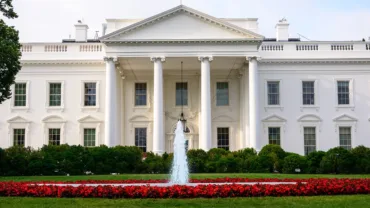The federal minimum wage is major political issue today, with calls from progressives to raise it from its current levels, and responses from conservatives to maintain it — or, eliminate it altogether.
This national wage floor, along with a variety of other labor reforms, became law 81 years ago today when the Fair Labor Standards Act (FLSA) took effect on October 24, 1938. The FLSA was signed into law four months earlier on June 25.
Of course, the minimum wage wasn’t the same level in 1938 as it is today; after all, today’s level of $7.25 an hour would have been the equivalent of over $120 an hour in 1938. Instead, the minimum wage that took effect 81 years ago was only $0.25 an hour (equivalent today to a bit over $4.50 an hour). Clearly, the minimum wage has been adjusted periodically over time, with the highest it has ever reached (relative to 2019 dollars) being $1.60 in 1966 (equivalent to $12.63 in 2019 dollars).
As I mentioned above, the federal minimum wage wasn’t the only major labor reform introduced by the FLSA. The law also instituted the eight-hour day/40-hour workweek standard, “time and a half” for overtime in certain jobs, and laws against “oppressive child labor.”
Although President Franklin Roosevelt often gets the lion’s share of the credit for passing the landmark labor law, the Supreme Court also deserves some credit for its existence, although likely not in the same manner: it was the Supreme Court’s opposition to Roosevelt’s previous attempts at labor reform that spurred the creation of the FLSA to begin with.
For example, 1918’s Hammer v. Dagenhart struck down a federal law against child labor. 1923’s Adkins v. Children’s Hospital struck down a federally-enacted minimum wage for women in the District of Columbia. Finally, there was 1936’s Morehead v. New York ex rel. Tipaldo, in which the Supreme Court struck down a minimum wage law that was specifically tailored (by future Supreme Court Justice Felix Frankfurter, no less) to comply with the Court’s Adkins ruling.
This final ruling was the last straw, both for the Roosevelt administration, and the public at large. Wage-hour legislation became a major issue in the 1936 presidential electoral campaigns. Roosevelt spoke at length during the campaign about seeking out some constitutional method (i.e., done in a way that could survive a Supreme Court challenge) of enacting labor reforms.
Roosevelt won the Electoral College 523 electoral votes to eight. He interpreted this landslide victory to mean that there was massive public support for his labor reforms. The Supreme Court was still a seemingly insurmountable hurdle, though. Which is where Roosevelt’s now-famous court-packing plan came in: in February 1937, Roosevelt proposed adding an additional six justices to the Supreme Court so that he could get his New Deal legislation upheld.
Whether Roosevelt’s proposal had any influence is the subject of some historical debate, but in March of 1937, the Supreme Court upheld Washington State’s minimum wage laws in West Coast Hotel Co. v. Parrish, overturning Adkins in the process.
From Parrish onward, the Supreme Court upheld Roosevelt’s New Deal legislation, leaving Roosevelt free to proceed with his planned labor reforms.
And by the next year, Roosevelt had signed the FLSA into law, the most comprehensive labor law enacted in modern history in the U.S.
Of course, the FLSA was quite controversial by a wide array of business interests, which led them to challenge the law as being unconstitutional. However, the Supreme Court unanimously upheld the law in 1941’s U.S. v. Darby, finding that Congress does indeed have the power under the Commerce Clause to regulate employment conditions.
With the Supreme Court on board with Roosevelt’s reforms, the FLSA continued to thrive and flourish over the years, and it continues to be the central labor law in the U.S.
That doesn’t mean that it isn’t still controversial among some business interests even today (as mentioned at the beginning of this article). But thanks to the Supreme Court, the FLSA is here to stay.






